SIFFORUM|Belt and Road Film Culture Roundtable Talk: Building a Growth Platform for Young Creators
On the afternoon of June 18, SIFFORUM: “Belt and Road” Film Culture Roundtable Talk was held at the Shendi Cultural Center, under the theme “Future Vision of Cinema: The Evolving Role of Film Festivals and Cross-Cultural Co-Creation”. Film festival directors, filmmakers, and industry professionals from Belt and Road partner countries gathered to engage in in-depth discussions on topics such as supporting young talent and constructing international co-production frameworks, offering fresh perspectives and directions for advancing film culture exchange and collaboration along the Belt and Road route.
The roundtable talk was divided into two sessions. The first session focused on the evolving role of film festivals and expansion of their responsibilities, particularly in supporting and nurturing young filmmakers. The second session turned to practical experiences in international co-productions and overseas film distribution, including co-production mechanisms, cultural collaboration, and market alignment. The forum was moderated by Professor Shi Chuan, PhD instructor at the Shanghai Theatre Academy.
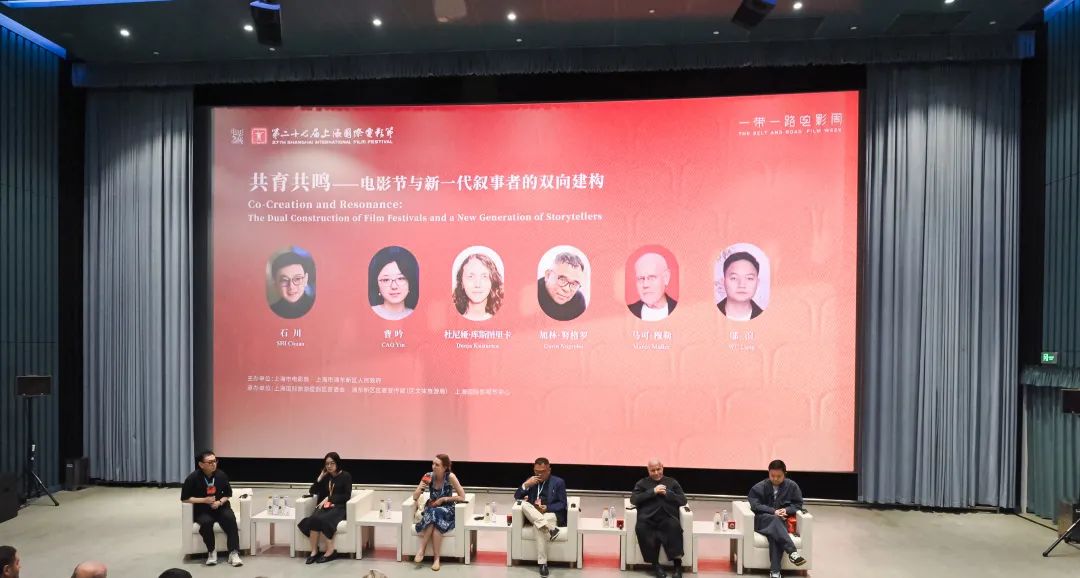
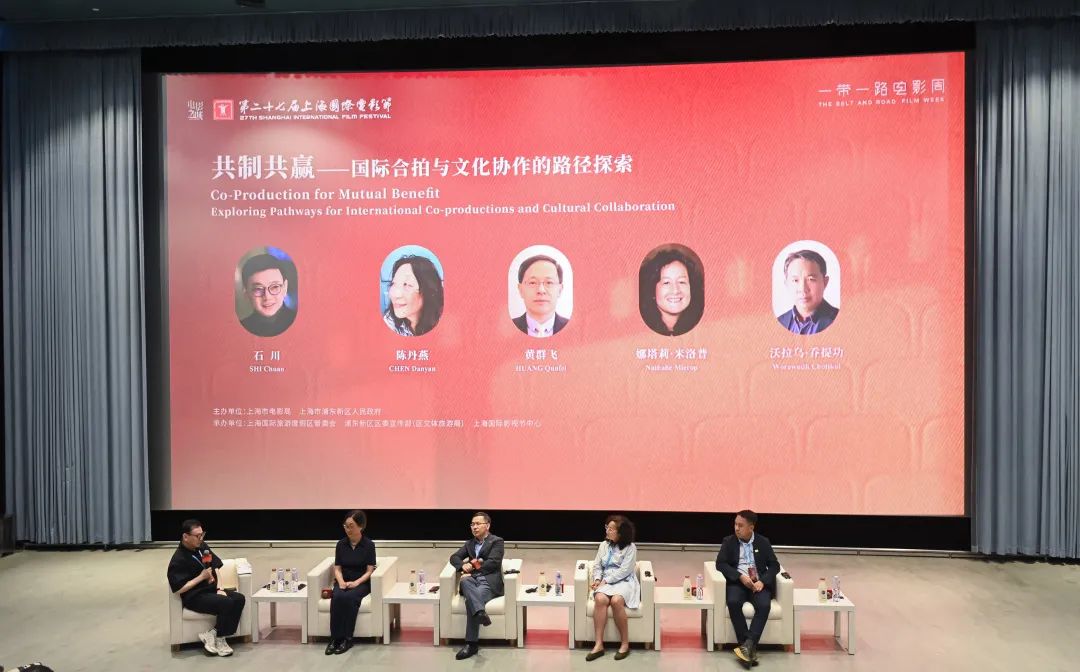
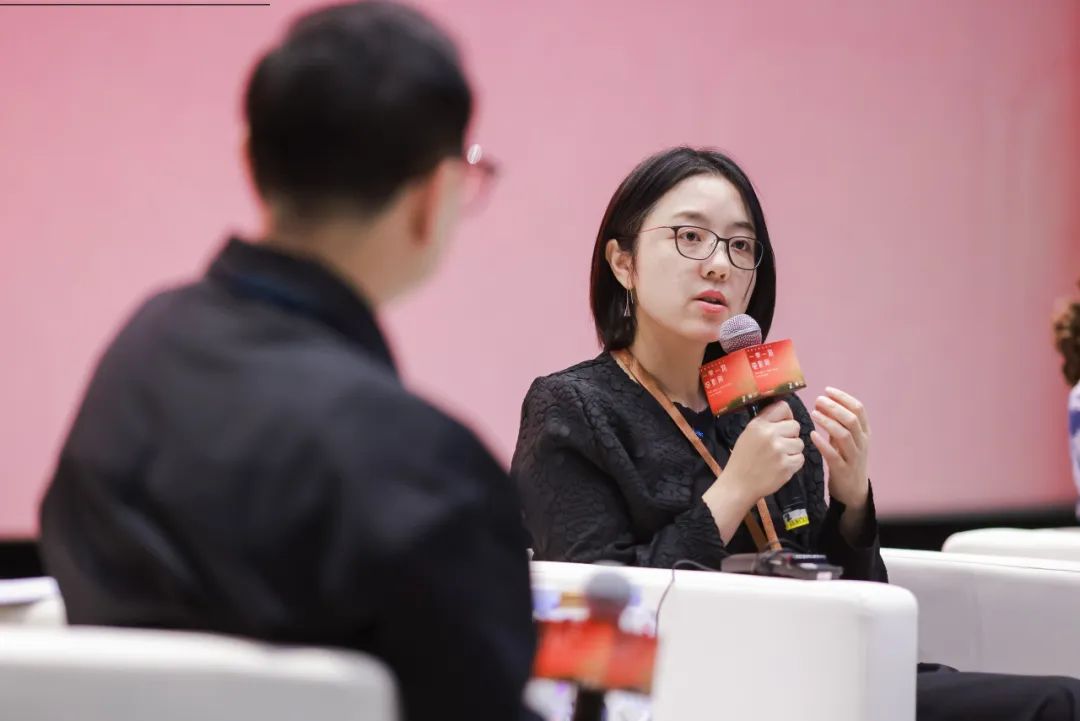
Cao Yin
Deputy Director, Shanghai International Film & TV Festivals, Co., Ltd.
“Our main focus is the uniqueness and originality of young creators.” Cao explained that, because film festivals must process a large volume of projects in a short time, those with distinctive qualities stand out more easily. “When it comes to young filmmakers, we assess the potential of their projects - whether the themes feel fresh, whether their perspectives are irreplaceable, and whether the script and visual language pursue a unique aesthetic. We want to see a spark of brilliance in their work.” She noted that young creators often underestimate the difficulty of execution, sometimes designing projects that are too grand to be feasible, or becoming overly focused on personal expression while neglecting audience engagement. “We prefer authors and projects that, even with limited resources and budget, can propose creative solutions and show a high level of completion in key aspects.” In recent years, SIFF has created various platforms to support such projects, including SIFF PROJECT and the Asian New Talent section, aiming to drive the industry’s transition toward professionalism and viability. “Our hope is that SIFF can encourage works with audiovisual aesthetic innovation, while also fostering projects that truly enter the industry and make a meaningful impact in the market.”

Dunja Kusturica
Festival Programmer of the Küstendorf International Film and Music Festival
Our film festival is different from those in places like Shanghai - it is held in a remote mountain village and retains a natural, organic character. The space is small and there is no red carpet. This informal atmosphere better fosters human connection and encourages interaction between young creators and established directors, producers, and other industry professionals. The festival operates in a spontaneous way, helping young talent connect with key figures in the industry and gain project funding. We welcome a wide variety of film styles. Some believe art can be categorized - for example, as minimalism or baroque - but our short film section initially only invited works by students from renowned film schools. Later, we realized that amateur directors could also surprise us. For instance, a Japanese photographer once brought his camera to the Philippines and shot a short film about children playing on a garbage mountain. His feature film later won an award at the Venice Film Festival. We value both short films with commercial potential and those with artistic techniques. Above all, we prioritize quality over genre.

Wu Lang
Chinese Director and Screenwriter
Many young filmmakers tend to overreach in their creations, trying to include too much, only to run into obstacles. In fact, when a creator stays true to their inner world, focuses on expressing their personal understanding and inner vision, and eliminates distractions, they are more likely to gain recognition from film festivals. People often think that short films are quick to produce and simple in content, but I deliberately choose the more challenging route - taking detours in short films to explore new paths. When making feature films, however, I prefer to choose the approach that brings me inner calm. Film festivals and filmmakers grow together and bring out the best in each other. Whether established or emerging, every festival needs fresh energy. Although winning awards at festivals involves a degree of luck, what’s more important for creators is building connections and continuously exploring new possibilities. To me, a film festival is like the string of a kite - the creator must always hold tightly to the end of that string. That’s how one maintains control over the kite’s height and direction. Whether the goal of filmmaking is to appeal to the broadest possible market or to innovate in cinematic language and express poetic inner emotions, there is no right or wrong - but holding onto that kite string is essential.
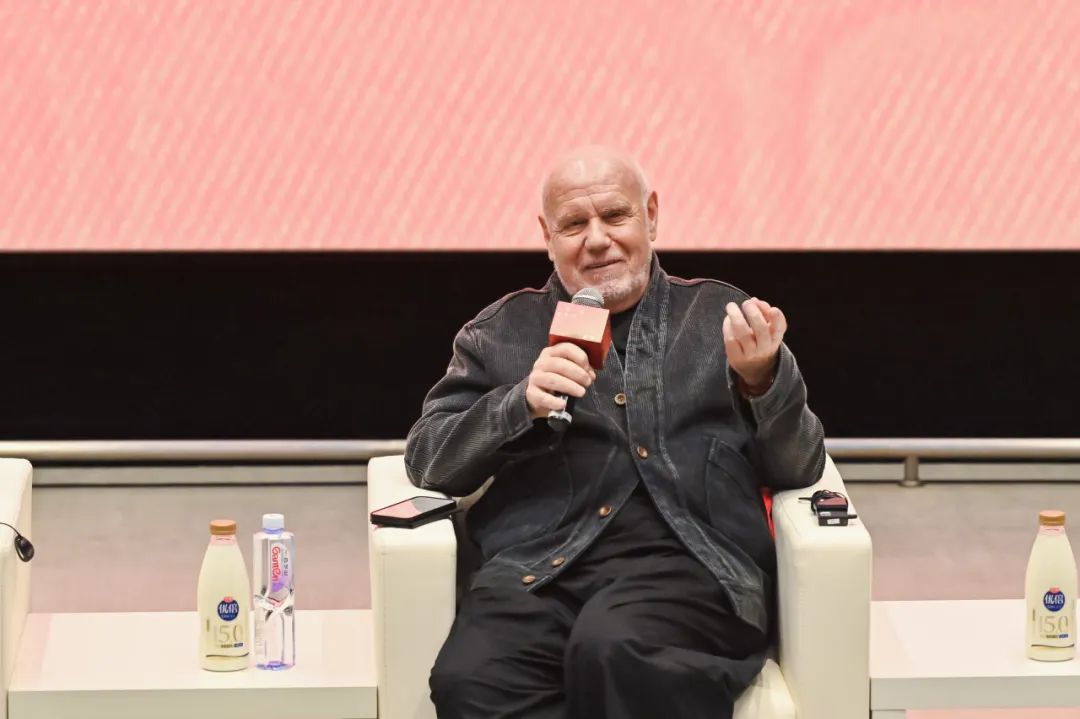
Marco Müller
Artistic Director, Film Arts Research Center, Shanghai University
Special Term Professor, Shanghai Film Academy
Film festivals come in many forms and are constantly evolving - the key lies in discovering new creative talent and offering them support. Having worked in the film industry for nearly seventy years, I’ve witnessed the development of both film festivals and the art of cinema. The two have long been deeply intertwined. When the rules of festivals change, new sections often emerge tailored for experimental filmmakers, helping them explore avant-garde expression. Traditional festivals must also embrace new forms of cinema - after all, change is already upon us. We need to not only pay attention to current festivals but also envision what future festivals might look like. Only then can film festivals retain their relevance. I often tell young Chinese filmmakers: why always focus on the big “wholesale” agencies? These institutions release dozens of films each year, and newcomers often have to wait a long time for their turn. From the experience of Burkina Faso and the Global South, we see that film festivals in places like Cuba and across Latin America are joining forces to create dedicated markets for cinema. Shanghai, in particular, is an extraordinary place - there are so many young talents here, and they are actively exploring new forms of cinematic expression.

Garin Nugroho
Founder of the Jogja-NETPAC Asian Film Festival, Indonesia
When we founded the Jogja-NETPAC Asian Film Festival in Indonesia, we knew that engaging young audiences was essential. Although Jogja is not an economic hub, it is a cultural capital - home to over 130 universities. Of the 165 film-related institutions across Indonesia, the vast majority are located here, creating a strong foundation of film talent and cultural resources. This allowed us to establish a film festival by relying on local assets rather than large-scale capital investment. We collaborate with film festivals in Jakarta and Singapore to support both local community development and provide platforms for young people from private universities and art schools to showcase their work. We offer fair opportunities and media support for emerging filmmakers, which has significantly improved the capacity for local film production in Indonesia. Indonesia is a nation of a thousand islands, and we hope that each island’s local institutions will be able to secure funding and organize efforts to support the film industry. To fund young talent, one must understand their potential, their limitations, as well as the constraints and advantages of the local context. Today, Jogja has become the film capital of Indonesia, and we anticipate that in 20 years, the majority of Indonesian films will originate from this city.

Huang Qunfei
Party Committee Member and Deputy General Manager, Huaxia Film Distribution Co., Ltd.
In recent years, the Chinese government has placed strong emphasis on promoting Chinese culture abroad, introducing various measures to support this goal. These include financial subsidies as well as services that facilitate international distribution. In response, Huaxia Film Distribution Co., Ltd. has established a dedicated department to support the international expansion of Chinese cinema. We not only help young directors submit their works to international film festivals, but also promote copyright exports to achieve overseas box office revenue. These efforts are currently well underway. In 2023, I represented Huaxia Film Distribution Co., Ltd. at SIFF to sign a strategic cooperation agreement with the Belt and Road Film Alliance. This year, we plan to introduce the Thai classic A Little Thing Called Love to Chinese audiences. Last year, we introduced a co-produced film from Sudan titled Goodbye Julia. It was the director’s debut feature, yet remarkably well-crafted. Centered on the encounter of two women from different backgrounds, the film explores universal issues facing women around the world - parenting, marriage, and self-worth - highlighting both the warmth of mutual support and the harshness of reality in the face of misunderstanding. Given the recent rise of China’s female-centric film market, we believe the film’s themes are likely to resonate with local audiences. We have completed the copyright acquisition and are preparing for its domestic release.

Chen Danyan
Chinese Writer and Documentary Filmmaker
Recipient of the Gold Medal of Merit of the Republic of Serbia
Since the very first SIFF, I’ve gotten into the habit of watching four films in a row. Over time, I’ve come to realize that the true value of a film festival lies in its ability to present rare and otherwise inaccessible works. I still remember the first time I heard Norwegian at a film festival - it sounded to me like the voice of a fish. That unique experience made me realize that language is about communication and connection, not something to fear because of difference. This insight is incredibly important.
At the Belt and Road Film Week, you can witness the diversity of the world - you learn to appreciate differences and discover common ground, to feel the shared human emotions even in foreign places. This kind of experience is especially precious and heartwarming in our times. The countries involved in the Belt and Road Initiative may not be geographically distant from us, but emotionally and culturally, there remains a large gap in understanding. We are familiar with English, French, and even Nordic cinema, but we know very little about the films, people, and cultures of Belt and Road countries. To portray these nations, to understand their culture and deconstruct their stories, requires a high level of empathy and comprehension from creators - without genuine understanding, creation is impossible. Some people mistake curiosity for understanding, but they are not the same. Curiosity can drive you to deeper knowledge, while a purely voyeuristic mindset does not. That’s why from the very beginning, we must avoid approaching these cultures with a mindset of exoticism.
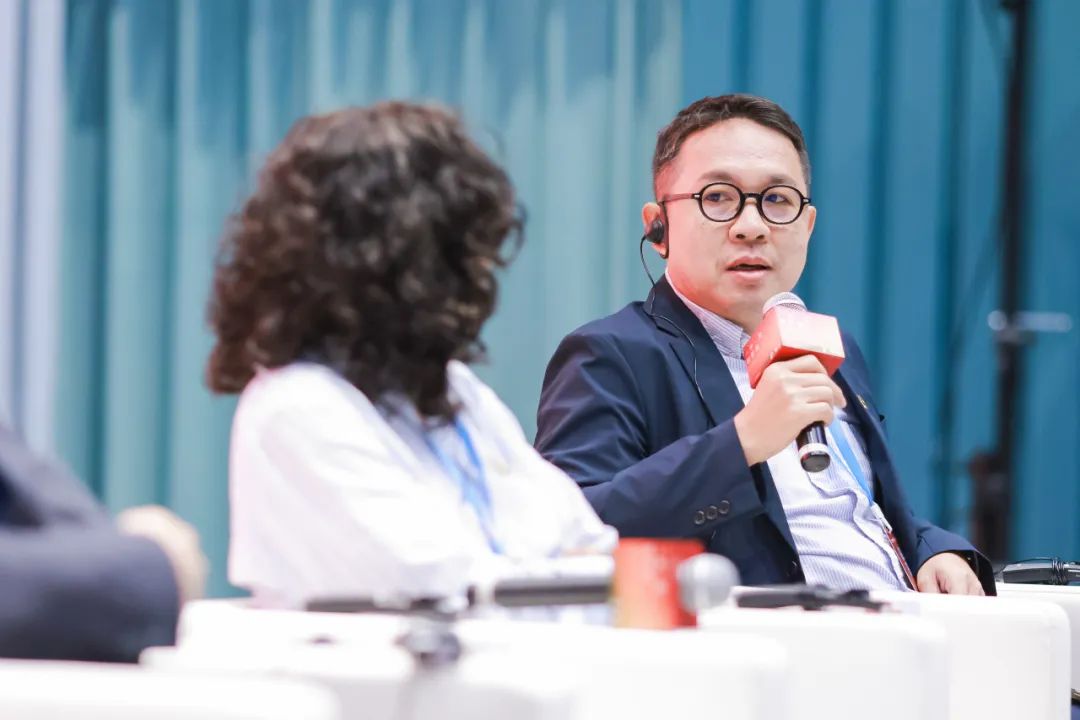
Worawudh Chotikul
Assistant Vice President, National Federation of Motion Pictures and Contents Associations , Thailand
Our co-production projects have performed impressively in global markets - particularly horror and comedy films, which are especially well-received. For example, many Latin American countries have acquired the rights to Thai horror films. Thailand has introduced a 30% cash rebate policy that supports the entire production cycle of small-scale films, with no upper limit on the amount. Additionally, the Thai government provides excellent support services - including film production infrastructure - to assist international film teams working in Thailand. One recent example is our investment in building a world-class film studio. Our film festival staff are also equipped with English communication skills, fully prepared to support international co-production initiatives. At present, we should focus more on the future than the past - together envisioning the development prospects and collaboration opportunities between China and Belt and Road countries over the next five years. We should especially focus on the younger generation. They are global citizens and can quickly develop mutual understanding through cultural exchange. It is essential that we bring young people into both social media and the film industry - encouraging them not just to spend two or three minutes watching short videos, but to also engage with feature-length films and experience the richness and depth they offer.

Nathalie Mierop
Director of International Film Promotion, Eye Film Institute, Netherlands
The international promotion of Dutch cinema faces challenges due to language barriers. However, through our practices, we’ve found that as long as a film’s story is authentic, original, and engaging, it can capture attention at film festivals. Once selected by an international festival, the film gains access to a global audience. Currently, American blockbusters dominate the Dutch film market, accounting for about 70% of the annual box office. In 2024, Dutch domestic films are expected to make up 12-14% of box office revenue, while 6% comes from non-Dutch, non-American films - including works from Europe and other regions. The Dutch films that perform well at the box office often possess strong originality and authenticity in storytelling. Audiences are enthusiastic about international films, as they provide a window into foreign cultures and global narratives. This is the magic of cinema - allowing viewers to experience different lives and stories. In fact, the cultural setting of a story isn’t the most critical factor. What matters is whether it offers a fresh narrative experience, regardless of its cultural origin - as seen in a previously mentioned film that achieved great success in the Netherlands. Additionally, there is a special category of films that tell deeply local stories, yet present them in a way that resonates powerfully with international audiences.







